Dulles Airport Work 2003
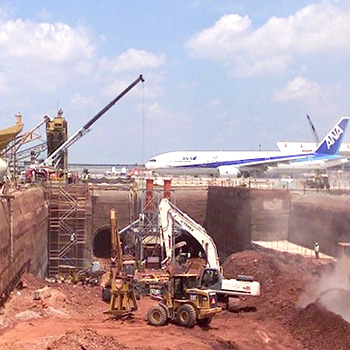
The Automated People Mover project at Dulles International airport involved nearly two miles of tunneling.
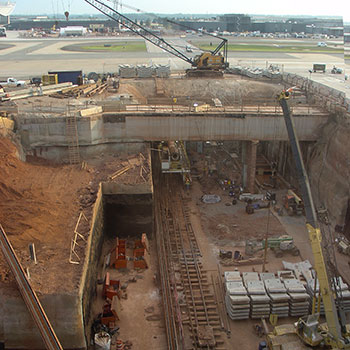
Large excavations were required for stations at the main terminal and the three mid-field terminals.
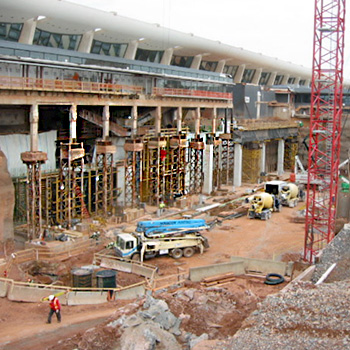
The station at the main terminal involved a 50-foot cut and extensive underpinning of the terminal.
Monitoring Requirements
- Monitor support of excavation for lateral displacements.
- Monitor active taxiways for surface subsidence due to tunneling.
- Monitor main terminal for stability during underpinning activities.
- Perform installation and monitoring without interrupting airport activities.
- Provide hourly data collection, processing, and reporting.
- Send alerts by email and text as necessary.
2003 Innovations
Lid-Link Antenna: GEO designed a traffic-rated, flush-mount antenna for the taxiway installations.
Wireless Gateways: Out of necessity, GEO developed two-radio gateways to relay data from the field loggers to a central location.
Monitoring Equipment
- 450 in-place-inclinometer sensors in 40 borehole installations.
- 70 multipoint borehole extensometers adjacent to and above the tunnel alignments.
- Battery-powered dataloggers with point-to-point radio modems.
- Traffic-rated, flush-mount antennas.
- AMTS prisms installed on structural elements of the main terminal.
- Web-based software.
Value of Monitoring
A real-time alarm was triggered during a TBM drive, and the machine was halted, despite skepticism from the tunneling engineers. The subsequent inspection found that the TBM had drifted slightly off course and snagged one of the MPBX anchors. The incident proved the value of monitoring.
Project Challenges
Short Work Windows: Restricted access is normal for infrastructure projects, but after 911, extra security measures at Dulles resulted in hour-long delays between the staging site and the work site.
Waterproofing: Surface obstructions were not allowed in the taxiways, so MPBX sensors, loggers, battery packs, and radios had to be installed below grade. GEO had to develop ways to waterproof these components since there were no off-the-shelf solutions.
EMl: High levels of electro-magnetic inference at the site produced noise and spikes in IPI measurements. GEO had to deploy special active filtering.
Radio Communications: The repeater functions of the radio modems did not work as advertised, so radio comms were unreliable until GEO deployed its own gateways.
Wireless AMTS Systems
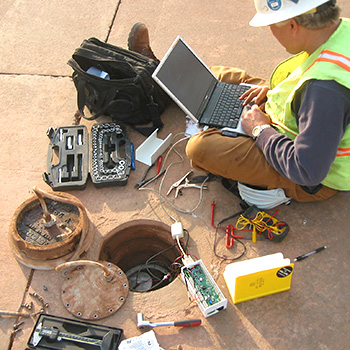
MPBX installations required coring through 18 inches of taxiway concrete, drilling boreholes, installing and grouting the instruments, and then squeezing in loggers, batteries, and radios.
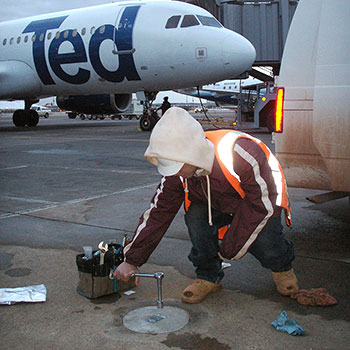
MPBXs had to be terminated flush with the taxiway surface. To meet this requirement, GEO developed a traffic-rated, flush-mount antenna. The resulting "Lid-Link" antenna is still used for some projects today.
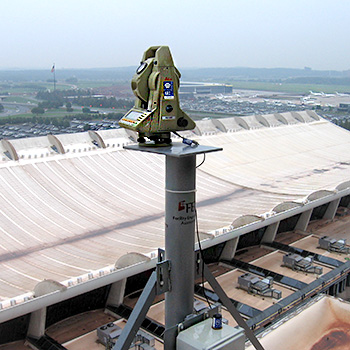
AMTS systems monitored the main terminal for stability. GEO provided automated least-squares processing. Continuous monitoring with robotic total stations was still a new application at the time.
Wireless Gateway
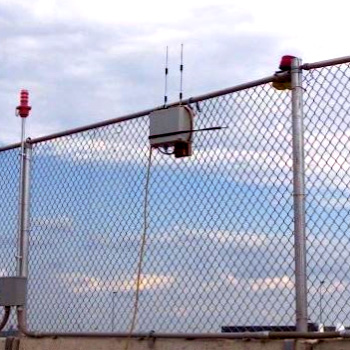
As noted previously, the repeater functions of the radio modems did not work as advertised, so GEO had to develop two-radio gateways to relay data from the loggers to a central location.
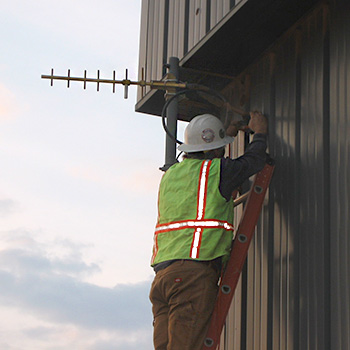
Transmissions from the gateways were received by a high-gain antenna shown here. GEO was committed to wireless communications from the early days, even incorporating "radio waves" into the company logo.
Monitoring the Project Today
What technology would we use to monitor the same project today?
Wireless node-and-gateway loggers would offer many advantages over the bulky loggers, battery packs, and point-to-point radios used at the time.
Digital multipoint extensometers would offer simpler installation and better waterproofing than the MPBXs used in 2003.
Shape arrays would reduce installation time, simplify logging and processing, and deliver better results than the IPIs available at the time.
